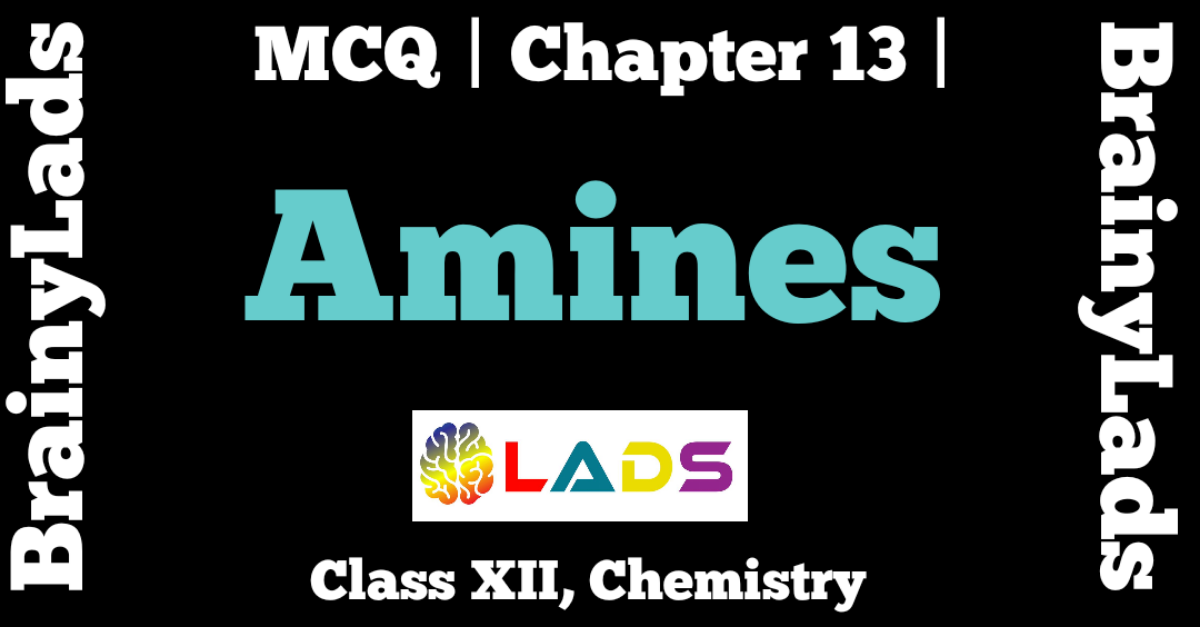MCQ of Polymers | Chapter 15 | Chemistry | Class 12 | CBSE |
MCQ of Polymers | Multiple Choice Questions of Polymers |
MCQ of Polymers
Question 1: Glycogen is a naturally occurring polymer stored in animals is a
- Monosaccharide
- Disaccharide
- Trisaccharide
- Polysaccharide
Answer: D (Polysaccharide)
Question 2: Which of the following is not a characteristic of thermosetting polymers?
- Linear or slightly branched long chain polymers
- Heavily branced and cross linked polymers
- Become infusible on moulding
- Cannot be remoulded or reused on heating
Answer: A (Linear or slightly branched long chain polymers)
Question 3: Bakelite is an example of
- Elastomer
- Fibre
- Thermoplastic
- Thermosetting
Answer: D (Thermosetting)
Question 4: Which factor imparts the crystalline nature to a polymer like nylon?
- Strong intermolecular forces like hydrogen bonding between chains
- van der Waals’ forces between the polymeric chains
- Close packing of chains due to ionic bonding between the chains
- Three dimensional network of chains
Answer: A ( Strong intermolecular forces like hydrogen bonding between chains )
Question 5: High density polythene is obtained by
- Polymerisation of ethene in a hydrocarbon solvent in the presence of Ziegler Natta catalyst
- Polymerisation of ethene under high pressure and temperature
- Free radical polymerisation of ethene at low temperature in presence of peroxides
- Polymerisation of ethene in presence of carbon tetrachloride
Answer: A (Polymerisation of ethene in a hydrocarbon solvent in the presence of Ziegler Natta catalyst )
Question 6: Which of the following is not true about high density polythene?
- Tough
- Hard
- Inert
- Highly branched
Answer: D (Highly branched)
Question 7: Polymer which has amide linkage is
- Nylon-6,6
- Terylene
- Teflon
- Bakelite
Answer: A (Nylon-6,6)
Question 8: Formation of nylons and polyesters are called step growth polymerisation because
- The polymers are formed by adding a monomer step by step
- The polymers are formed by condensation and monomers are joined by loss of simple molecules like water
- The monomers used for condensation are unsaturated molecules
- The polymers are formed by addition of large number of free radicals formed by monomers
Answer: B ( The polymers are formed by condensation and monomers are joined by loss of simple molecules like water )
Question 9: The monomers of biodegradable polymer, nylon 2-nylon 6 are
- Glycine + adipic acid
- Glycol + phthalic acid
- Phenol + urea
- Glycine + amino caproic acid
Answer: D (Glycine + amino caproic acid)
Question 10: Which of the following statements is not true about low density polythene?
- Tough
- Hard
- Poor conductor of electricity
- Highly branched structure
Answer: B (Hard)
You may also read MCQ of The Solid State, MCQ of Solutions, MCQ of Electrochemistry, MCQ of Chemical Kinetics, MCQ of Surface Chemistry, MCQ of General Principles and Processed of Isolation of Elements, MCQ of the p-Block Elements, MCQ of the d-And f-Block Elements, MCQ of Coordination Compounds, MCQ of Haloalkanes and Haloarenes, MCQ of Alcohols, Phenols and Ether, MCQ of Aldehydes, Ketones and Carboxylic Acids, MCQ of Amines, MCQ of Biomolecules, MCQ of Polymers, MCQ of Chemistry in Everyday Life
Question 11: Which of the following is not an example of rubber?
- Polychloroprene
- Buna-N
- Butadiene- styrene copolymer
- Polyacrylonitrile
Answer: D (Polyacrylonitrile)
Question 12: The difference in the densities of low density (LDP) and high density polymers (HDP) is due to the fact that
- LDP are highly branched structures while HDP consists of closely packed linear molecules
- LDP are linear chains while HDP are branched chains of polythene
- Both LDP and HDP are unbranched linear chains with different lengths
- At high temperature, the density of polymer is reduced
Answer: A ( LDP are highly branched structures while HDP consists of closely packed linear molecules )
Question 13: Teflon and neoprene are the examples of
- Copolymers
- Monomers
- Homopolymers
- Condensation polymers
Answer: C (Homopolymers)
Question 14: Arrange the following polymer in an increasing order of intermolecular forces: Fibre, plastic. elastomer
- Elastomer < Fibre < Plastic
- Elastomer < Plastic < Fibre
- Plastic < Elastomer < Fibre
- Fibre < Elastomer < Plastic
Answer: B (Elastomer < Plastic < Fibre )
Question 15: The S in buna-S refers to
- Sulphur
- Styrene
- Sodium
- Salicylate
Answer: B (Styrene)
Question 16: Terylene is condensation polymer of ethylene glycol and
- Benzoic acid
- Phthalic acid
- Terephthalic acid
- Salicylic acid
Answer: C (Terephthalic acid)
Question 17: Which of the following polymers does not involve cross-linkages?
- Vulcanised rubber
- Bakelite
- Melamine
- Teflon
Answer: D (Teflon)
Question 18: Heating rubber with sulphur is known as
- Galvanisation
- Bessemerisation
- Vulcanisation
- Sulphonation
Answer: C (Vulcanisation)
Question 19: Which of the following polymers does not have vinylic monomeric units?
- Acrilan
- Nylon
- Polystyrene
- Neoprene
Answer: B (Nylon)
Question 20: Low density polythene is used in the insulation of electricity carrying wires and manufacture of flexible pipes and squeeze bottles because
- It is tough, hard and rigid
- It is chemically inert, tough, , flexible and poor conductor of electricity
- It is very tough, good conductor of electricity and flexible
- It is chemically inert, very soft, water absorbent and poor conductor of heat
Answer: B ( It is chemically inert, tough, , flexible and poor conductor of electricity )
Do share this post if you liked it. For more updates, keep logging on BrainyLads



